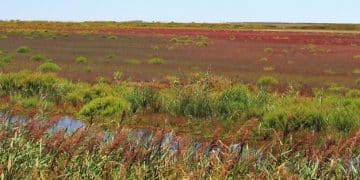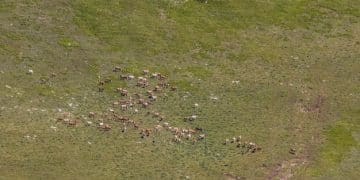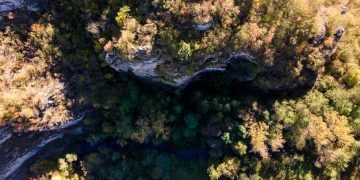Latest Federal Grants for Wildlife Habitat Restoration in the US
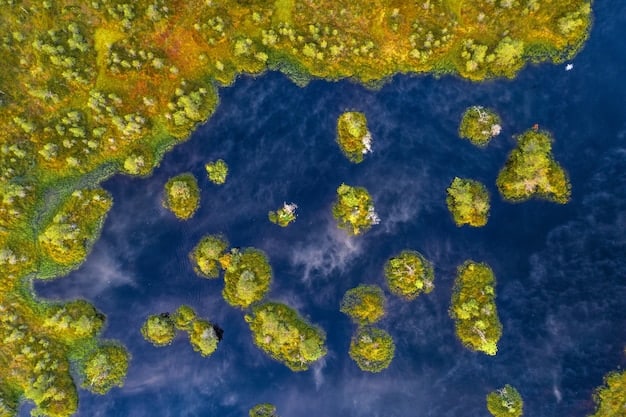
The latest federal grants available for wildlife habitat restoration in the US aim to enhance biodiversity, improve ecosystem health, and support conservation efforts through financial assistance to various organizations and agencies.
Are you passionate about wildlife conservation and habitat restoration? Discover the latest federal grants available for wildlife habitat restoration in the US, essential funding sources for impactful conservation projects.
Understanding Federal Grants for Wildlife Habitat Restoration
Federal grants play a crucial role in supporting wildlife habitat restoration projects across the United States. These grants provide the financial resources necessary for organizations and agencies to implement projects that enhance biodiversity and promote ecosystem health.
Understanding the types of grants available and the criteria for eligibility is essential for successfully securing funding for your conservation efforts.
Importance of Habitat Restoration
Habitat restoration is essential for maintaining healthy ecosystems and supporting diverse wildlife populations. It involves the process of repairing degraded or destroyed habitats to their natural condition.
- Increases biodiversity and supports endangered species.
- Enhances ecosystem services such as clean water and air.
- Improves resilience to climate change and natural disasters.
Federal grants often prioritize projects that demonstrate a clear plan for long-term ecological improvement and sustainability.
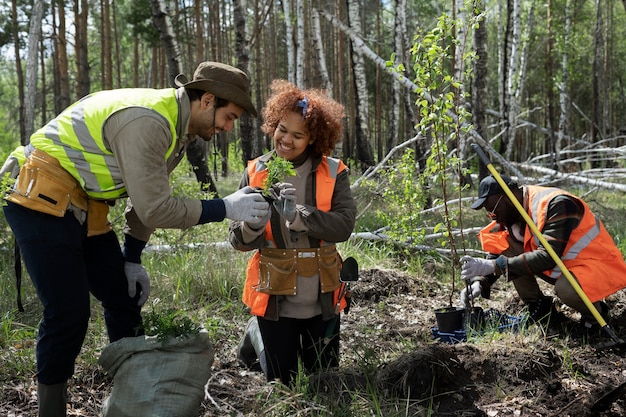
In conclusion, federal grants are a lifeline for wildlife habitat restoration, enabling crucial projects that benefit both wildlife and the ecosystems they depend on.
Key Federal Agencies Offering Grants
Several federal agencies offer grants for wildlife habitat restoration, each with its specific focus areas and funding priorities. Familiarizing yourself with these agencies can help you identify the best grant opportunities for your project.
Knowing where to look is half the battle when pursuing financial backing for your conservation work.
US Fish and Wildlife Service (USFWS)
The USFWS offers various grant programs aimed at conserving and restoring fish and wildlife habitats. Their programs often focus on endangered species, migratory birds, and wetlands conservation.
Natural Resources Conservation Service (NRCS)
The NRCS provides financial and technical assistance to farmers and ranchers to implement conservation practices on their land. These practices can include habitat restoration, wetland enhancement, and soil erosion control.
- Environmental Quality Incentives Program (EQIP)
- Conservation Stewardship Program (CSP)
- Agricultural Conservation Easement Program (ACEP)
Connecting with the right federal agency can significantly increase your chances of obtaining the necessary funding for your wildlife habitat restoration initiatives.
Recent Grant Programs and Initiatives
Staying informed about the most recent grant programs and initiatives is essential for maximizing your chances of receiving funding. New programs are often launched to address emerging conservation needs.
Knowing about these new programs could be the key to getting your project off the ground.
National Coastal Resilience Fund
The National Coastal Resilience Fund supports projects that enhance the resilience of coastal communities and ecosystems to the impacts of climate change. This can include restoring coastal wetlands, dunes, and other natural habitats.
These projects often focus on climate adaptation and enhancing the natural defenses of coastal regions.
Partners for Fish and Wildlife Program
The Partners for Fish and Wildlife Program provides technical and financial assistance to private landowners to restore and enhance fish and wildlife habitats on their property. It’s a great way to get local communities involved.
This program often leads to significant improvements in habitat quality and biodiversity.
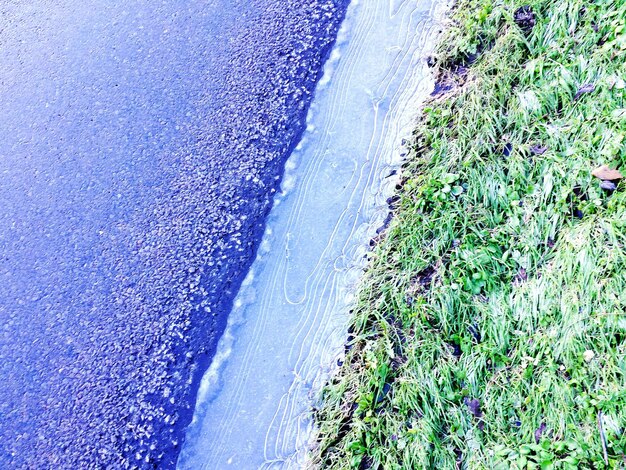
In short, keeping up with the latest grant programs ensures that your project aligns with current funding priorities and increases your chances of success.
Eligibility and Application Requirements
Understanding the eligibility criteria and application requirements is crucial for submitting a successful grant proposal. Each grant program has its own specific requirements, so it’s important to read the guidelines carefully.
Making sure your application meets all the requirements is not just important, it’s essential; it can make or break your chances.
Key Eligibility Criteria
Eligibility criteria may include the type of organization (e.g., non-profit, government agency), the location of the project, and the specific conservation goals.
Application Process
The application process typically involves submitting a detailed proposal that outlines the project’s objectives, methods, budget, and expected outcomes. A well-prepared proposal is key.
- Clearly define the project’s goals and objectives.
- Provide a detailed budget that justifies all expenses.
- Demonstrate the project’s potential impact on wildlife habitat.
- Include letters of support from partners and stakeholders.
Paying attention to detail and addressing all the requirements will significantly increase your chances of securing funding.
Tips for a Successful Grant Proposal
Writing a compelling grant proposal is an art and a science. There are several steps you can take to make your proposal stand out and increase your chances of success.
Remember that it’s not just about having a good project, it’s about presenting that project in the best possible light.
Highlight Project Impact
Clearly articulate the expected outcomes of your project and how it will benefit wildlife and the ecosystem. Showcase the tangible benefits that will result.
Demonstrate Expertise
Showcase your organization’s experience and expertise in habitat restoration and wildlife conservation. Establish credibility and trust.
- Provide evidence of past successes.
- Highlight the qualifications of your team members.
- Include letters of recommendation from respected experts.
A well-crafted proposal that demonstrates impact and expertise will resonate with grant reviewers and increase your likelihood of receiving funding.
Monitoring and Reporting Requirements
Once you receive a grant, you’ll be responsible for monitoring the progress of your project and reporting your findings to the granting agency. These requirements ensure accountability and transparency.
Grant management doesn’t end with receiving the funds; it’s an ongoing process.
Regular Progress Reports
Grant recipients are typically required to submit regular progress reports that summarize the project’s activities, outcomes, and financial expenditures. Keep detailed records.
Site Visits and Audits
Granting agencies may conduct site visits and audits to verify the accuracy of your reports and ensure compliance with the grant terms. Be prepared for this scrutiny.
Meeting the monitoring and reporting requirements is essential for maintaining a positive relationship with the granting agency and ensuring continued funding opportunities.
| Key Area | Brief Description |
|---|---|
| 🌱 Grant Importance | Federal grants are vital for funding wildlife habitat restoration projects. |
| 🏢 Key Agencies | USFWS and NRCS are key agencies offering grants. |
| 📝 Requirements | Meet eligibility criteria and prepare detailed proposals. |
| 📊 Monitoring | Regular progress reports and site visits are often required. |
Frequently Asked Questions
▼
Projects that improve biodiversity, restore degraded habitats, and enhance ecosystem resilience are prioritized. This includes wetland restoration, reforestation, and invasive species control.
▼
Yes, many grant programs, such as the Partners for Fish and Wildlife Program, specifically target private landowners to implement conservation practices on their properties.
▼
Visit the websites of federal agencies like USFWS and NRCS regularly. Subscribe to their newsletters and use online grant databases to stay informed about new programs.
▼
Clear objectives, detailed methods, a realistic budget, and a strong demonstration of the project’s potential impact are crucial. Including letters of support can also help.
▼
You’ll need to monitor your project’s progress, submit regular reports, and comply with the grant terms. Site visits may be conducted to verify your findings and ensure compliance.
Conclusion
Securing federal grants for wildlife habitat restoration requires careful planning, a deep understanding of available resources, and a commitment to meeting the rigorous standards set by funding agencies. By staying informed, crafting compelling proposals, and diligently managing awarded projects, you can play a vital role in preserving our nation’s precious wildlife habitats.
